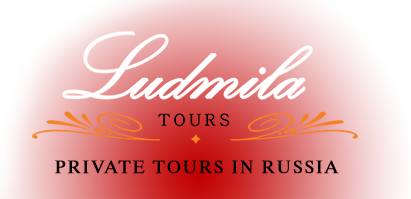On the south-east of the square is the much larger Cathedral of the Archangel Michael (1508), where almost all the Muscovite monarchs from Ivan Kalita to Alexis I of Russia are buried. (Boris Godunov was originally buried there, but was moved to the Trinity Monastery.)
Cathedral Square has two more domestic churches of the Metropolitans and Patriarchs of Moscow. They are the Church of the Twelve Apostles (1653-56) and the exquisite one-domed Church of the Deposition of the Virgin's Robe. It was built by Pskov artisans over the years 1484-88. It is well known for superb icons and frescoes from 1627 and 1644.

The other notable structure of Cathedral Square is the Ivan the Great Bell Tower. The tower which is 81 meters (266 ft) high is located on the north-east corner of the square. It is said that it marks the exact centre of Moscow and resembles a burning candle. It was built in 1600 and until the Russian Revolution; it was the tallest structure in the city. The construction of buildings taller than it was forbidden. Its 21 bells were used to sound the alarm if any enemy was approaching. The upper part of the structure was destroyed during the Napoleonic Invasion and then was rebuilt. The Tsar Bell is the largest bell in the world, stands on a pedestal next to the tower.
The oldest secular structure on Cathedral Square is Ivan III's Palace of Facets (1491). The imperial thrones are held in it. The next oldest is so called Terem Palace which was the first home of the royal family. The original Terem Palace was also commissioned by Ivan III, but most of the palace was built in the 17th century. The Terem Palace and the Palace of Facets are linked by the Grand Kremlin Palace. This was commissioned by Nicholas I in 1838. The largest in the Kremlin, it cost sum of eleven million rubles to build. The renovation in the 1990s was more than one billion dollars. It contains very impressive reception halls, a ceremonial red staircase, private apartments of the tsars, and the lower storey of the Resurrection of Lazarus church (1393). The church is the oldest extant structure in the Kremlin and the whole of Moscow.
The northern corner of the Kremlin is occupied by the Arsenal, which was originally founded by Peter the Great in 1701. It was meant to store weapons and military equipment. It was also opened to become a museum of military glory with all kinds of military symbols taken in battles. The southwestern section of the Kremlin holds the Armoury building. Built in 1851 it is currently a museum housing Russian state regalia and Diamond fund.
The Soviet government moved from Petrograd to Moscow on 12 March 1918. Vladimir Lenin selected the Kremlin Senate as his residence. Joseph Stalin also had his personal rooms in the Kremlin. The residence of the Soviet government was closed to tourists until 1955. It was not until the Khrushchev Thaw that the Kremlin was reopened to foreign visitors. The Kremlin Museums were established in 1961 and the complex was among the first Soviet patrimonies inscribed on the World Heritage List in 1990.
The Patriarch of Moscow has a suite of rooms in the Kremlin. Still divine service in the Kremlin cathedrals is held irregularly, because they are still administered as museums.
